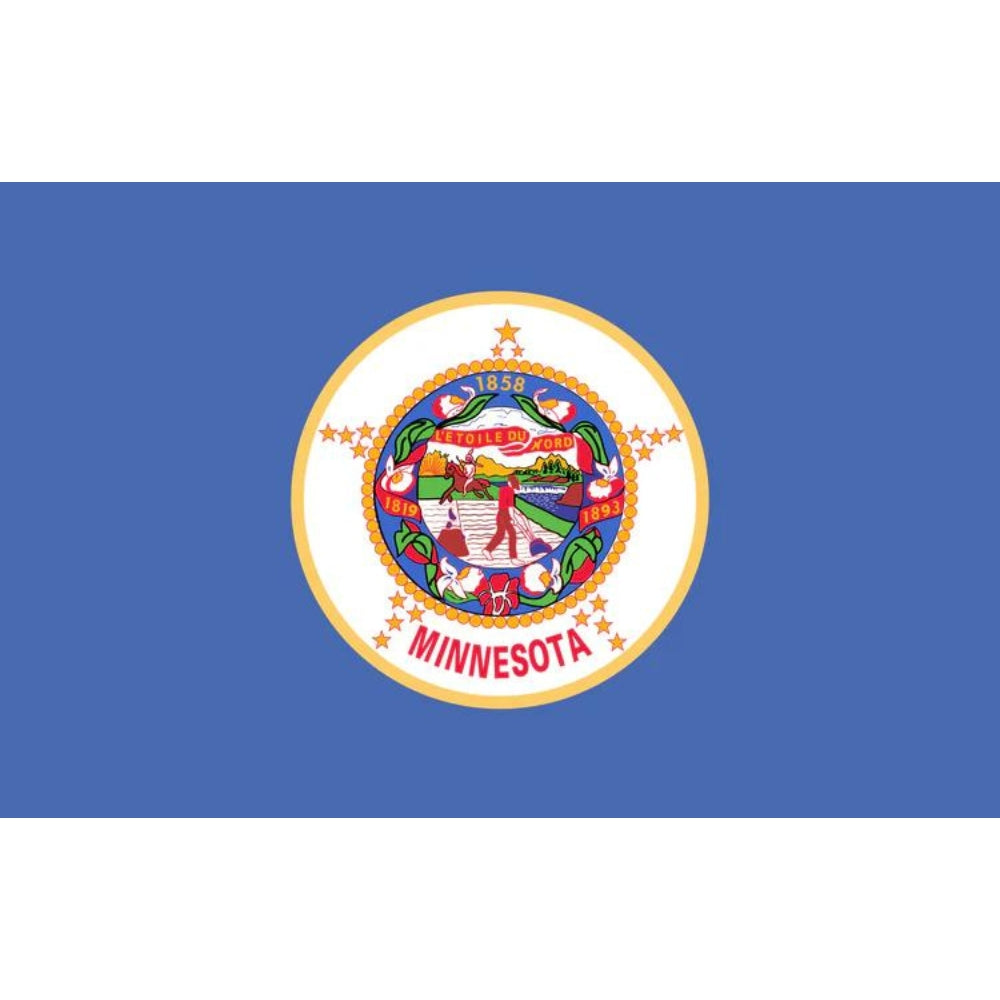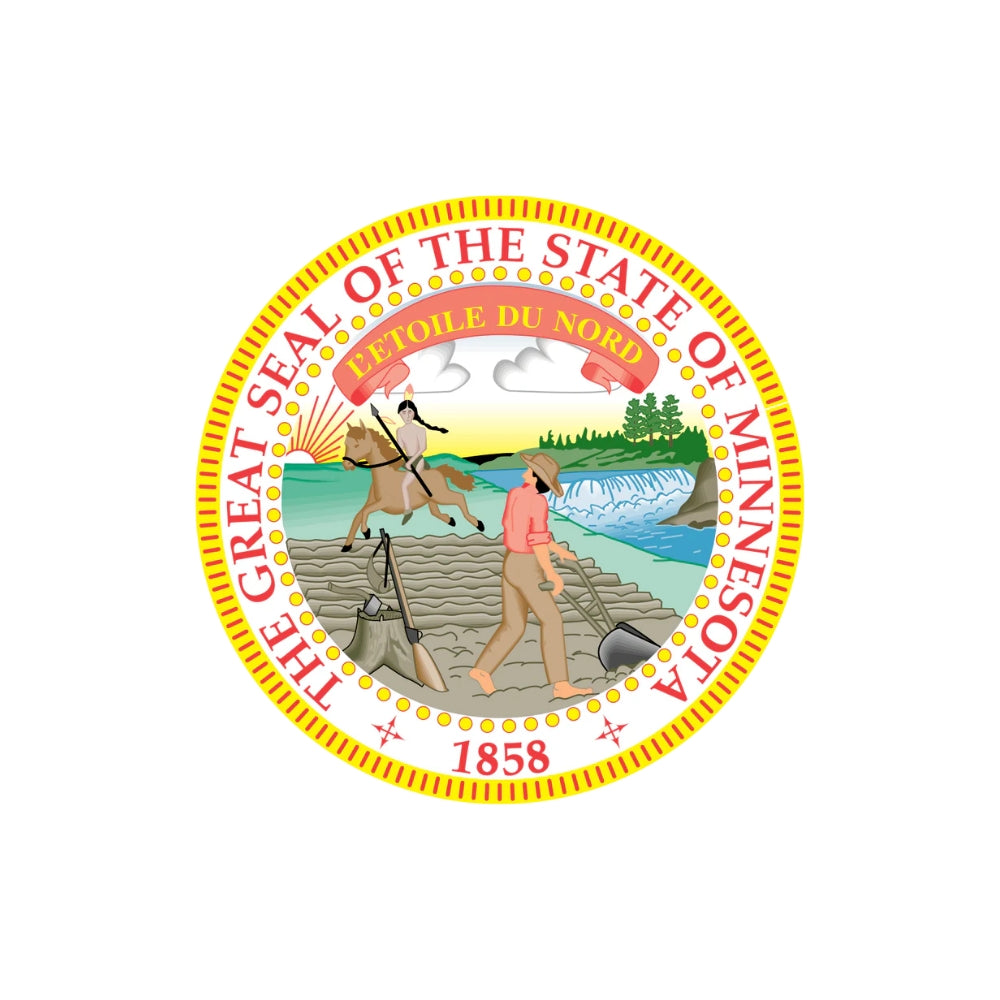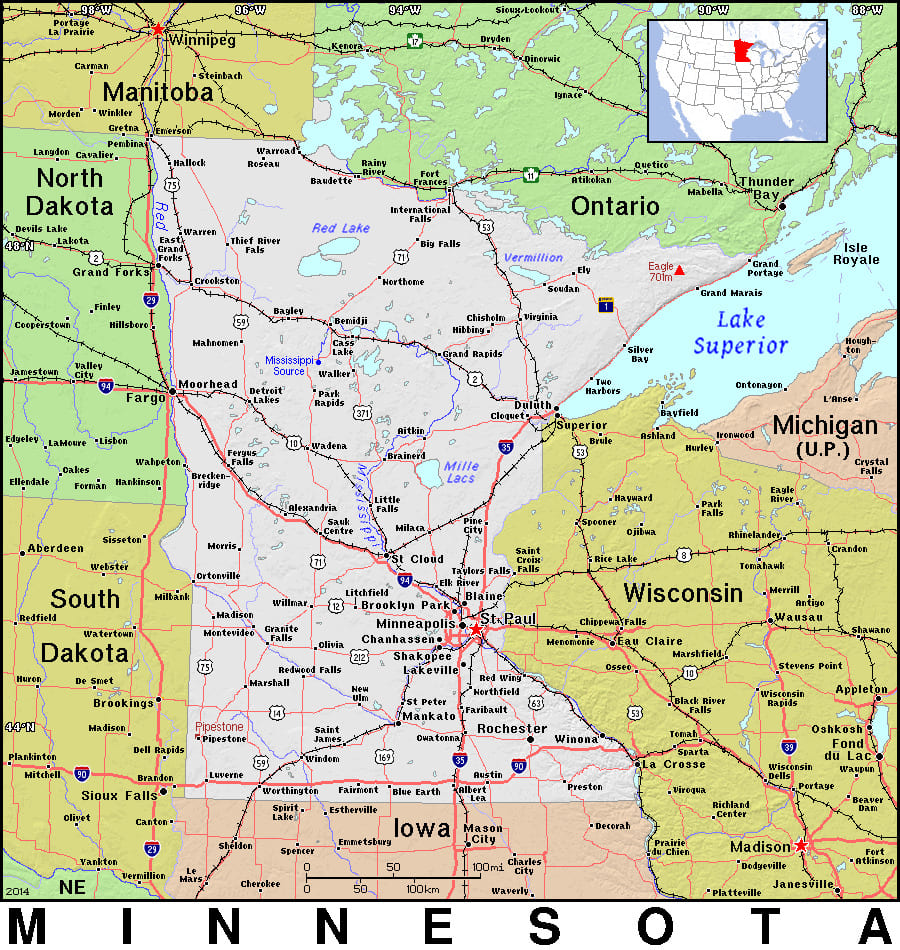Explore the Fascinating History of Minnesota
Take our Minnesota Trivia Quizzes for a Chance to Win a 6-Month Subscription to History By Mail!

The History of Minnesota
Journey Through Minnesota Trivia
Welcome to our Minnesota history and trivia page, presented by History By Mail. Join us as we explore the fascinating past and vibrant culture of the North Star State. From the shimmering waters of Lake Superior to the vibrant city of Minneapolis, we'll uncover some of Minnesota's hidden gems and put your knowledge to the test with exciting quizzes. Let's embark on a journey through Minnesota's history and trivia together.
Minnesota is a state steeped in captivating tales and a unique heritage. From the time of Native American tribes like the Dakota and Ojibwe to the notable figures of Minnesota's history, such as Paul Bunyan and the Mayo Clinic, this state has played a significant role in shaping American history. Its picturesque lakes, including the renowned Boundary Waters Canoe Area Wilderness, and the majestic North Shore along Lake Superior offer breathtaking natural beauty and outdoor adventures. Minnesota's thriving arts scene, vibrant music traditions, and strong Scandinavian influence contribute to its rich cultural tapestry. Today, Minnesota is cherished for its vibrant cities, lush forests, and a spirit of innovation that reflects the enduring legacy of the North.
Join us as we delve into Minnesota's history and trivia, uncovering its hidden treasures and celebrating the diverse tapestry of this remarkable state. Let's embark on this exciting journey together!
Facts about Minnesota
State Abbreviation: MN
Capital: St. Paul
Name Origin: The name Minnesota comes from the Dakota tribe’s word for the Minnesota River, mnisota, meaning “cloudy, muddy water” or “sky-tinted water.”
Nickname: The North Star State
Statehood: 1858; 32nd state
State Motto: L'Étoile du Nord (The North Star)

Minnesota's Flag
The Minnesota state flag was adopted in 1957 and showcases a royal blue field with a circular emblem in the center. The emblem features a white five-pointed star surrounded by a wreath of pink lady slippers, the state flower of Minnesota. The star represents the North Star, symbolizing the state's nickname, the North Star State. It serves as a guiding light, representing Minnesota's status as the northernmost state in the contiguous United States.
The blue field signifies the clear skies and pristine waters that are abundant throughout Minnesota. It reflects the state's countless lakes, including the iconic Lake Superior, and its strong connection to nature.
Encircling the star and lady slippers is a ribbon with the state motto, "L'Étoile du Nord," which translates to "The Star of the North" in French. This motto further emphasizes Minnesota's northern location and its historical ties to French explorers.
The Minnesota state flag beautifully represents the state's natural beauty, its unique flora, and its historical significance. It serves as a proud symbol of Minnesota's identity, highlighting its celestial guidance, natural wonders, and cultural heritage.
Minnesota's Great Seal
Minnesota's initial seal was introduced sometime post-1849, prior to achieving statehood. Upon achieving statehood, a fresh seal was sanctioned by the legislature. A mishap by the engraver resulted in the mirror image of the old seal being created instead, which was subsequently adopted as the official design. This emblem portrays a farmer engaged in plowing a field, with his rifle and powder horn resting against a nearby tree stump. The farmer gazes toward a Native American on horseback, set against the backdrop of the emerging sun, the Mississippi River, and St. Anthony Falls.

--- State Trivia #1 ---
History of Minnesota
Around 12,000 years ago, it is believed that the earliest inhabitants arrived in what is now known as Minnesota. Native American tribes, including the Dakota Sioux, Arapaho, Cheyenne, Iowa, Omaha, Winnebago, Ojibwe, and others, established their presence on this land many centuries later.
Following the American Revolution, the United States assumed control of territories previously under British ownership, which are now part of the Midwest region. In 1803, the United States acquired the Louisiana Territory from France. Sections of land from both these regions, along with land obtained through treaties with Native American tribes, were amalgamated to establish the Minnesota Territory.
Through further treaties with the Dakota Indians, Minnesota's boundaries were expanded, and in 1858, it officially became the 32nd state of the United States. As the Civil War commenced in 1861, Minnesota, a state loyal to the Union, was the first to offer volunteer troops to engage in the conflict.
State Symbols
Fun Facts
- Downtown Minneapolis boasts an extensive system of aboveground walkways, spanning a distance of nine miles and connecting various buildings throughout the city. This remarkable network, spanning over 73 blocks, holds the distinction of being the largest skyway in the world.
- Renowned individuals hailing from Minnesota include Charles Schulz, the creative genius behind the beloved comic strip "Peanuts," Judy Garland, the talented actress known for her role in "The Wizard of Oz," and iconic musicians Prince and Bob Dylan.
- The Mall of America, located in Minnesota, holds the title of the largest mall in the United States. With a staggering number of over 500 stores, it also encompasses a vast seven-acre amusement park and even features full-size roller coasters within its premises!
- Minnesota holds the honor of being the birthplace of waterskiing, which originated in 1922.
- According to legend, Minnesota's lakes were said to have been formed by the colossal lumberjack Paul Bunyan and his faithful blue ox, whose footprints shaped the land. However, in reality, these lakes were formed by the gradual melting of glaciers over time.
--- State Trivia #2 ---

Things To Do in Minnesota
- Explore Voyageurs National Park: Minnesota is home to a significant portion of this captivating national park, renowned for its pristine lakes, dense forests, and picturesque waterways. Embark on boating adventures, fishing excursions, and immerse yourself in the serene beauty of the wilderness.
- Visit the Boundary Waters Canoe Area Wilderness: Located in northern Minnesota, this vast wilderness area beckons outdoor enthusiasts with its interconnected lakes and untouched landscapes. Paddle through tranquil waters, camp under starlit skies, and embrace the tranquility of this remarkable wilderness.
- Marvel at Split Rock Lighthouse: Admire the historic Split Rock Lighthouse, perched atop rugged cliffs overlooking Lake Superior. This iconic landmark offers breathtaking views of the vast lake and stands as a testament to Minnesota's maritime heritage.
- Immerse Yourself in the Twin Cities: Explore the vibrant cities of Minneapolis and St. Paul, rich in cultural offerings, arts, and culinary delights. Visit renowned museums, enjoy live performances, and indulge in diverse dining experiences.
- Experience North Shore's Scenic Beauty: Drive along the stunning North Shore of Lake Superior, where rocky cliffs meet the glistening waters. Discover charming coastal towns, hike scenic trails, and witness the mesmerizing waterfalls that adorn this picturesque region.

General Map of Minnesota
Minnesota is flanked by Canada to the north, while Lake Superior and Wisconsin lie to the east. Iowa marks its southern border, and to the west, it is bordered by North and South Dakota. The state's topography, which refers to the shape of the land, was primarily shaped thousands of years ago by glaciers. These slow-moving masses of ice sculpted the plains and low hills of Minnesota and left behind numerous lakes.
Famous People From Minnesota
--- State Trivia #3 ---
FREQUENTLY ASKED QUESTIONS (FAQ) ABOUT MINNESOTA
Minnesota's name has its roots in the Dakota Sioux language. The word "Minnesota" comes from the Dakota word "Mnisota," which means "cloudy water" or "milky water." This is a reference to the state's numerous lakes, rivers, and water bodies.
Minnesota became the 32nd state of the United States on May 11, 1858. Prior to achieving statehood, the area was inhabited by Native American tribes, and it went through periods of French and British control before becoming part of the United States as part of the Northwest Territory.
St. Paul is home to the Saint Paul Farmers' Market, one of the oldest continuously operating farmer's markets in the United States. Established in 1854, the market offers fresh produce, flowers, and artisanal goods and has become an important part of the city's cultural and culinary scene.
Minnesota had its role in the Civil Rights Movement. In 1948, the state became one of the first in the nation to pass a law banning racial discrimination in employment, setting a precedent for later national legislation. Minneapolis also witnessed civil rights activism in the 1960s, including protests against housing discrimination and efforts to promote racial equality.
Related Resources
- Official Website of the State of Minnesota: The official website of the state of Minnesota provides comprehensive information about tourism, government services, business resources, and more. Visit: https://mn.gov/
- Explore Minnesota Tourism: Discover the attractions, outdoor adventures, cultural experiences, and events that Minnesota has to offer. Plan your trip and explore the diverse regions of the state. Visit: https://www.exploreminnesota.com/
- Minnesota Historical Society: Learn about Minnesota's history, access archival resources, visit historic sites and museums, and explore educational programs offered by the Minnesota Historical Society. Visit: https://www.mnhs.org/
- Minnesota Department of Natural Resources: Explore Minnesota's natural beauty, outdoor recreational opportunities, state parks, lakes, and wildlife conservation efforts. Find information about hunting, fishing, camping, and more. Visit: https://www.dnr.state.mn.us/
- Minnesota State Parks and Trails: Discover the state parks, trails, and recreational areas in Minnesota. Plan your outdoor adventures, find camping and hiking opportunities, and explore the natural wonders of the state. Visit: https://www.dnr.state.mn.us/state_parks/index.html



